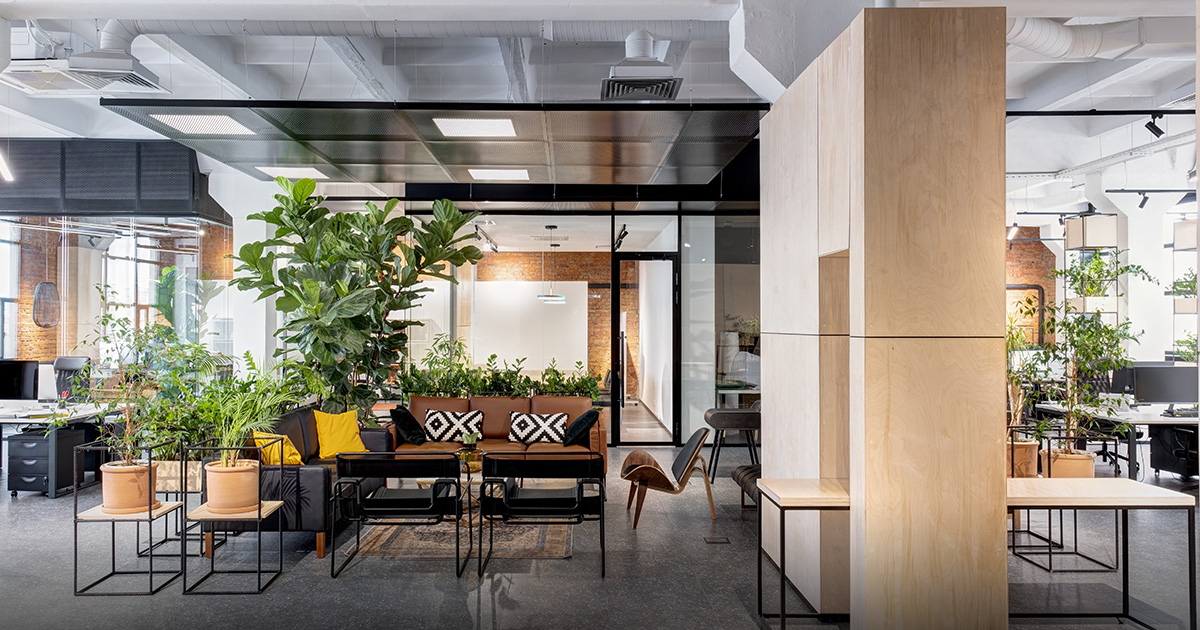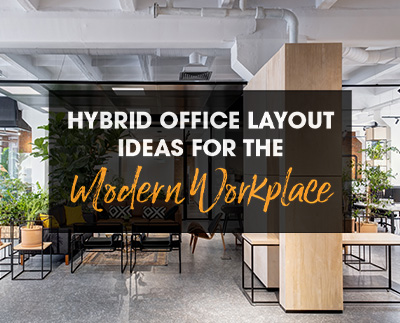
The pandemic has had a massive impact on offices throughout the globe. According to the Global Work-from-Home Experience Survey, 76% of workers prefer a hybrid work model that allows them to split their time between their home and their physical office.
With the widespread adoption of remote work, businesses are forced to rethink the traditional office layout in order to keep up with modern workplace standards. The future of work is hybrid, and it looks like it’s here to stay.
This post offers hybrid office layout ideas that will motivate employees to trek to the office to collaborate and socialize with their peers, from movable workstations to outdoor office spaces to communal kitchens and café-style seating.
What is a hybrid office model?
What are the benefits of a hybrid office?
Affording employees the opportunity to work from home and from the office has many benefits that positively affect workers and businesses alike.
These benefits include:
- Increase in collaborations
- Better work relationships
- Improved work-life balance & overall well-being
- Increased productivity & employee satisfaction
- Better retention rates
- Employee-employer trust
- Reduced real estate costs
- Bigger talent pool
Hybrid office layout ideas for the modern workplace
Hot-desking
Hot-desking is a system that does not allocate a desk to every single employee. Instead, desks are used by different people at different times as needed. When designing a hybrid office layout, hot-desking is ideal as it saves space as well as resources.
Hot-desking is commonly used in coworking spaces, but since the hybrid work model is being adopted worldwide, it no longer makes sense to have a permanent desk for employees who only come into work a handful of times per month. It’s time to forget about huge open spaces with crammed workstations; fewer desks that allow people to easily plug their own devices and jump right into work is the easiest way to set up a modern office.
Movable workstations
Nothing is more efficient than opting for movable workstations in an office. What that means is choosing office furniture that can be easily reconfigured as needed. Think desks and office chairs with casters.
Employees can reconfigure their desks to form a unit when collaborating on a project or when they are simply brainstorming, and they can push apart when they want to work individually. In contrast, when there is an unforeseen event such as a pandemic where social distancing is required, mobile workstations can be separated with little effort, making it easy to comply with mandated guidelines.
Outdoor office spaces
If your client has outdoor space that isn’t being utilized, it’s the perfect opportunity to introduce the idea of an outdoor office space. Studies have shown that there are various health benefits to being surrounded by fresh air and sunlight, anywhere from enhancing concentration to reducing stress to boosting creativity & mood and even to improving short-term memory.
An outdoor office space is a great way to encourage employees to come into the office, especially on a beautiful day. Although it’s unlikely that all employees will be working outside at once, you still have to make sure there are enough work surfaces and seating to accommodate several workers at any given time.
In terms of outdoor office layout, long tables that comfortably seat 6 people should do the trick. You can also add 2-person tables for those who need to work alone to fully concentrate.
Communal kitchens

When designing a hybrid office layout, including a space that is dedicated to eating is essential. Whether the office is large or small, a communal kitchen can be used as a tool to bring back human connection between employees.
When working from home became mandatory during the pandemic, we had technology and information at our fingertips. Now, to bring employees to a place where they can reconnect with their colleagues, the office layout must have a space that is neutral and inviting; a place people want to migrate to when leaving the comfort of their workstations.
Architect Wayne Turett, owner of Turett Collaborative, talks a lot about what can make a kitchen an inviting place in the office. He mentions that automatic espresso machines, instant hot water taps in the sink, and anything allowing easy accessibility is just a start to convenience. High tables where people can sit and chat or have a quick meeting, neutral soft lighting, comfortable seating, and screens with either the news, information, or multi-player video games available to everyone.
Café-style seating
Many remote workers choose to work out of coffee shops every so often because the atmosphere encourages productivity, creativity and innovation. A similar atmosphere can be recreated in a hybrid office.
Café-style seating (e.g., booths with outlets, bar stools, etc.) coupled with a self-serve coffee bar—or even one that is run by a barista—is a great way to create just the right ambiance to inspire workers who thrive in a casual, bustling environment.
Inclusive meeting rooms
Boardrooms with massive tables are not ideal when creating a hybrid office layout. Smaller, more intimate tables that can accommodate 6-8 people work better as entire teams won’t be in the office at once.
Proper acoustic treatment is also key for privacy as well as to enhance the audio for any remote workers who log into a meeting from home. It also goes without saying that enough outlets must be installed, and all other electrical considerations have to be made to account for conferencing technology such as projectors, screens, speakers, laptops, etc.
Share this Post




